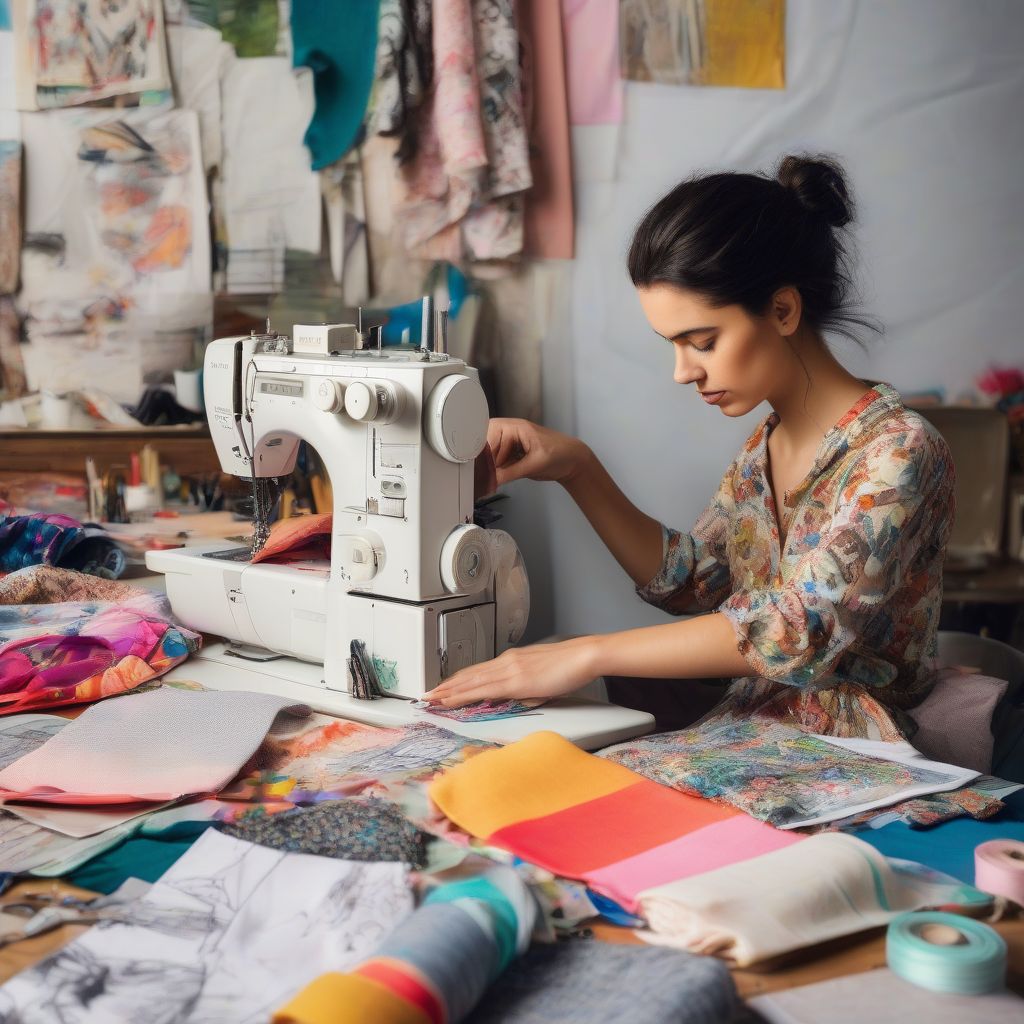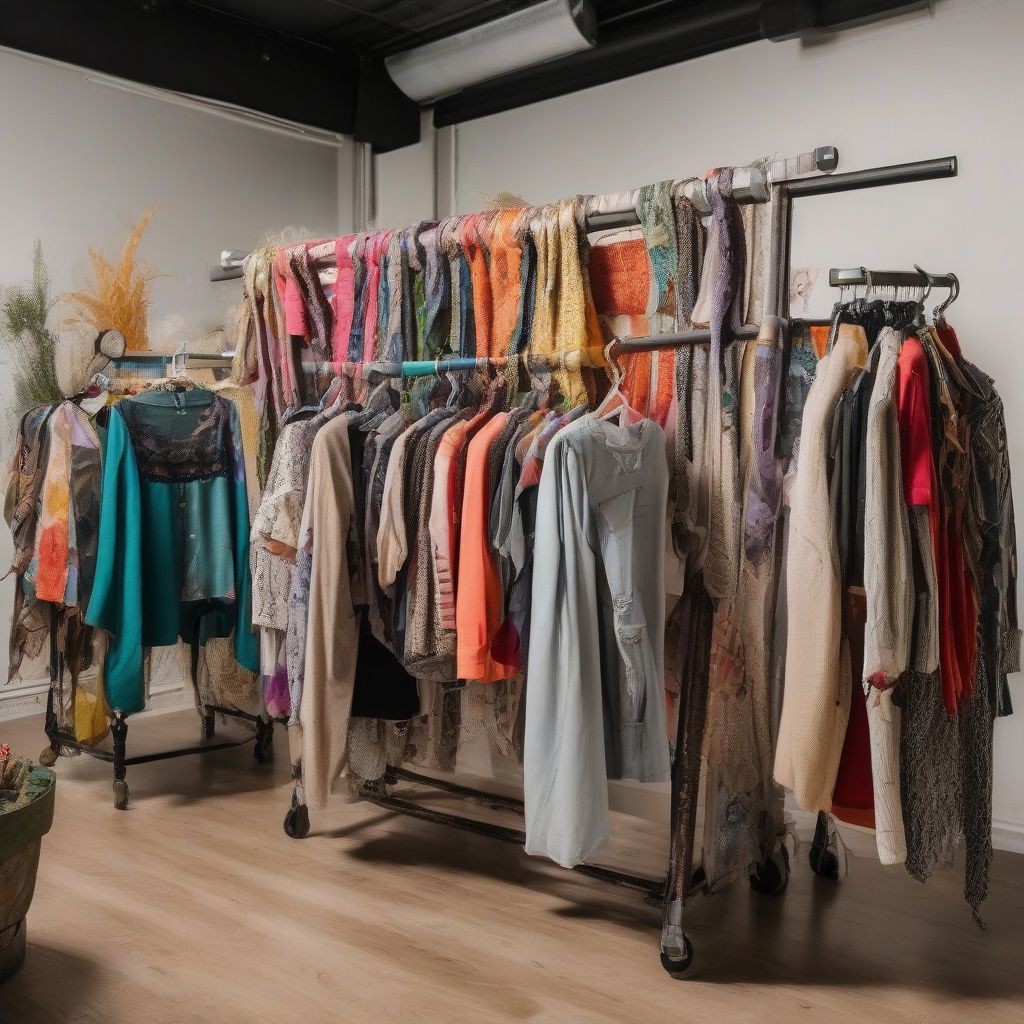Have you ever looked at a pile of old clothes and thought, “There’s so much potential here”? If you’re passionate about fashion and sustainability, turning that thought into reality by starting your own upcycling fashion business might be the perfect venture for you. It’s a chance to unleash your creativity, champion ethical fashion, and tap into a growing market of conscious consumers.
But where do you even begin? This comprehensive guide will walk you through everything you need to know to transform your passion for upcycling into a thriving business.
1. Find Your Niche: What’s Your Upcycling Style?
The world of upcycled fashion is vast and varied. Before you start sketching designs, it’s crucial to find your niche:
- What will you upcycle? Will you focus on transforming vintage clothing? Repurposing old jeans into bags? Giving new life to discarded fabrics?
- Who is your target audience? Are you targeting eco-conscious millennials, vintage fashion lovers, or budget-conscious shoppers?
- What’s your unique selling proposition (USP)? What sets your upcycled creations apart from the competition? Is it your unique design aesthetic, your commitment to using specific materials, or your focus on a particular style or item?
 Woman Working on Upcycled Clothing Designs
Woman Working on Upcycled Clothing Designs
2. Develop Your Skills and Knowledge
Upcycling requires a unique blend of creativity, sewing skills, and an understanding of fabric and design.
- Hone your sewing and crafting skills. If you’re not already a whiz with a needle and thread, there are countless online tutorials, workshops, and courses to help you master the basics and beyond.
- Experiment with different upcycling techniques. Explore techniques like patchwork, embroidery, fabric dyeing, and visible mending to develop your signature style.
- Learn about sustainable sourcing. Familiarize yourself with sourcing materials ethically, including sourcing vintage and secondhand fabrics, working with deadstock fabrics, and understanding textile recycling.
3. Create a Business Plan: Sewing the Seeds for Success
A solid business plan is the foundation of any successful venture. It outlines your goals, strategies, and how you plan to achieve them.
- Define your business structure. Will you operate as a sole proprietorship, partnership, LLC, or another legal structure?
- Conduct market research. Analyze your target market, competitors, pricing strategies, and potential sales channels.
- Outline your marketing and sales plan. How will you reach your target audience? Consider online platforms like Etsy, Shopify, and Instagram, as well as local craft fairs, pop-up shops, and collaborations with sustainable boutiques.
- Manage your finances. Determine your startup costs, pricing strategy, projected revenue, and plan for managing expenses and cash flow.
4. Source Your Materials: Treasure Hunting for Sustainable Fabrics
Sourcing materials is at the heart of upcycling:
- Embrace secondhand shopping. Explore thrift stores, vintage shops, online marketplaces, and even your own closet for unique finds and hidden gems.
- Connect with fabric recyclers. Partner with textile recycling companies or organizations that collect and redistribute discarded fabrics.
- Consider deadstock fabrics. Deadstock fabrics are leftover materials from textile mills and design houses, offering a more sustainable alternative to virgin fabrics.
5. Design and Production: Bringing Your Upcycled Visions to Life
- Create a collection or product line. Start with a small, cohesive collection that showcases your style and skills.
- Perfect your patterns and designs. Ensure your designs are well-structured, flattering, and adaptable to different sizes and body types.
- Prioritize quality and durability. While upcycling involves reusing materials, the quality of your finished products should be impeccable.
 A Rack of Unique Upcycled Clothing in a Boutique
A Rack of Unique Upcycled Clothing in a Boutique
6. Build Your Brand: Tell Your Sustainable Story
- Craft a compelling brand identity. Develop a brand name, logo, and visual aesthetic that reflects your upcycling philosophy and appeals to your target audience.
- Highlight your sustainability story. Transparency is key. Clearly communicate your upcycling process, the origin of your materials, and your commitment to ethical practices.
- Engage on social media. Showcase your creative process, behind-the-scenes glimpses, and finished products on visual platforms like Instagram and Pinterest.
7. Pricing and Sales: Finding the Value in Upcycled Fashion
- Calculate your costs. Factor in material costs, labor, overhead expenses, and your desired profit margin.
- Research competitor pricing. Understand the price range for similar upcycled or sustainable fashion items.
- Choose a pricing strategy. Consider cost-plus pricing, value-based pricing, or competitive pricing.
8. Market Your Upcycled Creations: Reaching Your Target Audience
- Create an online presence. Launch an online store through platforms like Etsy, Shopify, or your own website.
- Leverage social media marketing. Share captivating content, engage with your followers, and run targeted ad campaigns.
- Explore collaborations and partnerships. Connect with sustainable fashion bloggers, influencers, and ethical boutiques to expand your reach.
- Participate in craft fairs and pop-up shops. Local events provide opportunities to showcase your work, connect with customers face-to-face, and gain valuable feedback.
9. Legal and Financial Considerations
- Register your business. Obtain the necessary permits and licenses to operate legally in your area.
- Understand tax obligations. Consult with an accountant to determine your tax responsibilities.
- Manage inventory and shipping. Implement efficient systems for tracking inventory, processing orders, and shipping your products.
10. Embrace Continuous Learning: The Evolution of Sustainability
The world of fashion, especially sustainable fashion, is constantly evolving.
- Stay updated on industry trends. Follow sustainable fashion blogs, publications, and influencers to stay informed about new techniques, materials, and ethical practices.
- Seek out workshops and courses. Continuously refine your skills, explore new upcycling techniques, and expand your knowledge of sustainable fashion.
Conclusion: Stitching Together a Sustainable Future
Starting an upcycling fashion business is a journey fueled by passion, creativity, and a commitment to sustainability. It’s about transforming discarded materials into unique pieces that tell a story, while minimizing your environmental impact. It’s about offering an alternative to fast fashion and inspiring conscious consumption.
As you embark on this rewarding journey, remember that building a successful business takes time, dedication, and a willingness to learn and adapt. Embrace the challenges, celebrate your successes, and never stop experimenting and exploring the boundless creative possibilities of upcycled fashion.
Are you ready to breathe new life into discarded materials and launch your own upcycling fashion brand? Share your thoughts and questions in the comments below! We’d love to hear about your upcycling inspirations and aspirations.
[amazon bestseller=”upcycling fashion”]
